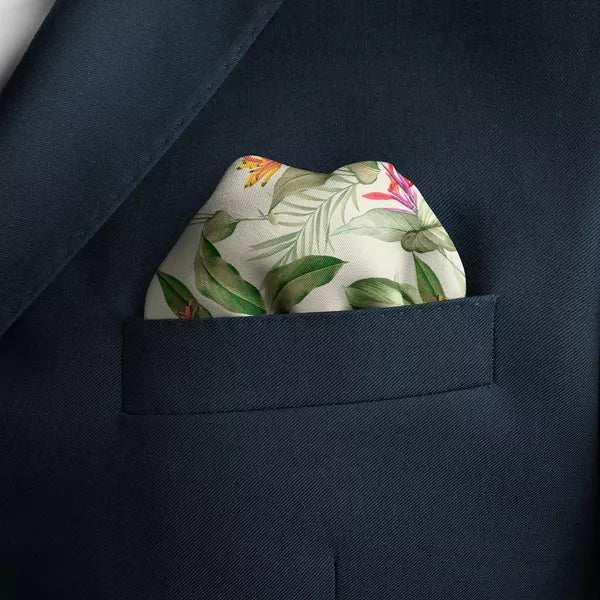Luxury Meets Care: Best Practices for Washing Silk Scarves
Caring for Silk Scarves

Keeping your silk scarves looking fabulous and lasting longer isn't rocket science, but it does require a bit of TLC. Let's dive into how you can keep these luxurious accessories in tip-top shape.
Why Proper Care Matters
Silk scarves, especially those you wear close to your face or neck, need more frequent cleaning. Think about it—if you rock that favorite silk scarf every week, give it a wash at least once a month. This regular cleaning helps get rid of dead skin cells, makeup smudges, and food crumbs that can build up. Keeping your scarf clean not only makes it look great but also helps it last longer (The Spruce).
Picking the Right Detergent
Choosing the right detergent for washing your silk scarves is super important. For mulberry silk, go for a gentle detergent without dyes, fragrances, or bleach. These harsh chemicals can mess up the delicate fabric (Nathon Kong).
While some dish soaps might seem gentle, they're really meant for dishes, not your precious silk. Stick to products made for delicate fabrics, like silk-specific detergents or even mild baby shampoo.
Here are some top picks for washing your silk scarves:
| Detergent Type | Description |
|---|---|
| Silk-specific Detergent | Specially made to clean silk without harming the fibers. |
| Mild Baby Shampoo | Gentle enough for delicate fabrics, just like it is for babies. |
| Unscented Gentle Soap | Non-irritating and pH-neutral, perfect for silk. |
Using a gentle, non-chemical, and ideally pH-neutral detergent helps keep the natural silk fibers intact, the colors vibrant, and the fabric soft. If you can't find a silk-specific detergent, these alternatives work just fine. For more detailed tips, check out our silk scarf care instructions.
By knowing why proper care is important and choosing the right cleaning products, you can keep your silk scarves looking luxurious and beautiful for any occasion. For more handy tips on cleaning silk scarves, explore our other resources.
Washing Silk Scarves
Taking care of your silk scarves isn't rocket science, but it does need a bit of TLC. Here's how to keep them looking fabulous and feeling luxurious without any drama.
Hand Washing Techniques
Hand washing is the way to go for silk scarves. It keeps the fabric happy and the colors popping. Here's your step-by-step guide:
- Get the Water Ready: Fill a clean basin with lukewarm water (about 30°C). Hot water is a no-go; it can mess up the silk fibers.
- Add Some Soap: Use a gentle detergent made for silk or even a mild baby shampoo. Steer clear of harsh stuff that can strip the silk of its natural oils.
- Soak It Up: Dunk the scarf in the water and let it chill for up to 30 minutes.
- Gentle Swish: Move the scarf around in the water gently. No wringing or twisting! Focus on any dirty spots.
- Rinse Well: Rinse the scarf under cool running water until all the soap is gone. Make sure there's no detergent left behind.
For more detailed steps, check out our page on hand washing silk scarves.
Drying Silk Scarves
Drying your silk scarf right is just as important as washing it. Here's how to do it:
- No Wringing: Don't wring or twist the scarf to get rid of water. It can mess up the shape and damage the fibers.
- Hang It Up: Hang the scarf to dry, but do it horizontally to avoid stretching. Keep it out of direct sunlight to prevent fading.
- Use a Rack: If you can, lay the scarf flat on a drying rack or a clean towel. This helps it keep its shape while it dries.
- Final Touch: Once dry, you might need to give it a gentle press with an iron set to the silk setting. For more on this, see our guide on ironing silk scarves.
Stick to these washing and drying tips, and your silk scarves will stay in top-notch condition. For more care tips, check out our full silk scarf care instructions.
Ironing Silk Scarves
Ironing silk scarves can be a bit tricky, but with the right approach, you can keep them looking fabulous. Let's dive into some tips and tricks for ironing silk scarves, especially those delicate hand-sewn ones.
Best Practices for Ironing
When it comes to ironing silk, think low and slow. You want to be gentle to avoid any mishaps. Here’s a quick guide to help you out:
| Step | What to Do |
|---|---|
| 1. Damp It Down | A slightly damp scarf is easier to iron and less likely to get damaged by heat. |
| 2. Keep It Cool | Set your iron to the lowest heat setting. Silk and high heat are not friends. |
| 3. Use a Barrier | Place a clean cotton cloth between the iron and the scarf. This prevents direct contact and protects the fabric. |
| 4. Flip It Over | Always iron the scarf from the back side to keep the colors vibrant and the fabric safe. |
For more detailed instructions, check out our full guide on ironing silk scarves.
Handling Hand-Sewn Scarves
Hand-sewn scarves need a bit more TLC. The stitching can be fragile, so you’ve got to be extra careful. Here’s how to handle them:
| Step | What to Do |
|---|---|
| 1. Skip the Seams | Avoid ironing directly over hand-stitched areas to keep the seams intact. |
| 2. Use a Press Cloth | This adds an extra layer of protection, letting you press gently without direct heat. |
| 3. Take Your Time | Be patient and gentle to maintain the scarf’s structure and beauty. |
By following these tips, you can keep your silk scarves looking as good as new. For more advice on caring for your scarves, check out our articles on cleaning silk scarves and silk scarf care instructions.
Keeping Your Silk Scarves Fresh and Fabulous
Want to keep your silk scarves looking as stunning as the day you bought them? It's all about proper storage and a bit of TLC. Follow these tips, and your scarves will stay gorgeous for years.
Storing Silk Scarves the Right Way
Silk scarves need a cozy, dry spot to call home. Make sure they're clean before tucking them away. Here’s how to store them like a pro:
- Fold or Roll: Gently fold or roll your scarves with acid-free paper. This keeps them smooth and wrinkle-free.
- Fabric Bags or Boxes: Use breathable fabric bags or special scarf boxes. They keep dust and mold at bay, so your scarves stay fresh.
- Avoid Sunlight: Sunlight is a no-go. It fades colors and weakens the fabric. Store your scarves in a dark place.
- Insect Protection: Toss in some lavender sachets to keep bugs away and add a lovely scent.
| Storage Method | Description |
|---|---|
| Folded | Gently fold to avoid creases. |
| Rolled | Roll with acid-free paper for smooth storage. |
| Fabric Bags | Use breathable bags to keep dust out. |
| Dark Place | Store away from sunlight to prevent fading. |
Need more tips? Check out our detailed guide on storing silk scarves.
Tackling Stains and Wrinkles
Spills and wrinkles happen, but they don’t have to ruin your scarf. Here’s how to handle them:
- Act Fast: Got a stain? Blot it gently with a clean cloth right away. Don’t rub—it’ll only make things worse.
- Gentle Cleaning: For tough stains, see our guide on cleaning silk scarves for step-by-step help.
- Wrinkle Fixes: Don’t hang your scarves—they’ll stretch out. Lay them flat or roll them up. If you need to iron, use a low setting and a cloth between the iron and the scarf.
- Prevent Creases: Store your scarves with non-acid tissue paper to keep folds soft and prevent deep creases ( The Spruce).
For more tips on keeping your scarves in top shape, visit our silk scarf maintenance guide.
By following these simple steps, your silk scarves will stay as beautiful as ever. Happy styling!














